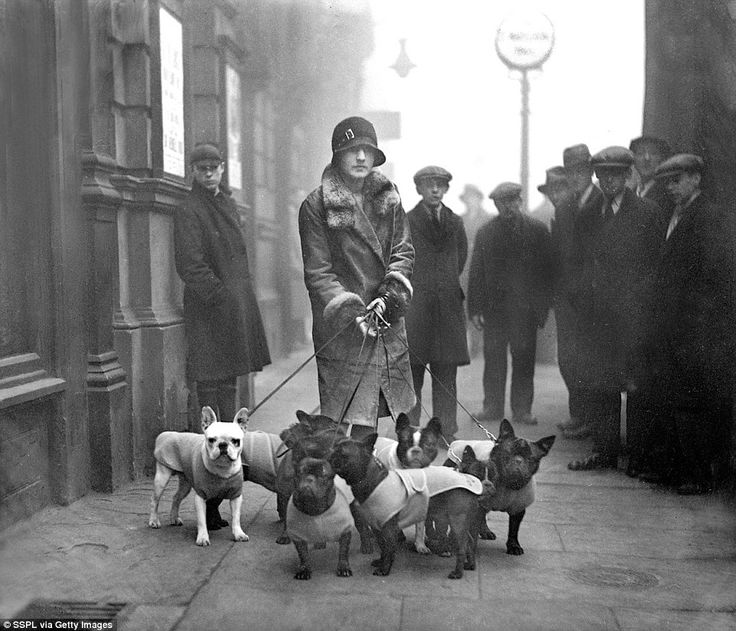
The Dog Walker: “The girl was apparently having more fun out of the walk than the dog, who did not seem to be enjoying himself particularly. That was not surprising, for what respectable and self-respecting hunting dog would like to be obliged to trot along Fifth Avenue every morning with an attendant to give him the exercise he could give himself so much better if he were only allowed the privilege?”–New York Times, January 15, 1899
During the late 1800s and early 1900s, it was perfectly normal to see the high-society ladies or their attendants walking their lap dogs down Fifth Avenue or through Central Park. It was not normal, however, to see a girl of the lower classes walking a large dog down Millionaire’s Row.
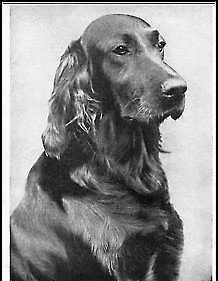
One rainy Friday morning in January 1899, a young girl wearing a grey suit, with the skirt at ankle length, attracted every passerby as she “seemed to take in what was apparently a morning constitutional.” Although there was a constant drizzle falling–half rain and half sleet–she carried no umbrella. All she carried was a leash, to which a handsome Irish setter was attached.
Approached by a curious reporter for the New York Times, the young dog walker explained that she was getting paid to walk the dog. The reporter did some investigating into this curious new dog walker career.
According to the reporter, a woman of means had walked into the the Exchange for Women’s Work on Thirtieth Street and asked the manager, “Haven’t you some one on your books I can get to exercise my dog for me?”
The manager was no doubt thrown off by the question, because up to that point, the “work” that was sold at the Exchange was typically handiwork such as crocheted shawls and knitted sweaters. Never before had someone requested a professional dog walker to exercise their pups.
Around the same time, the young girl registered at the Exchange for Women’s Work in order to find employment while she waited for a “regular profession” that she was expecting to start in the spring. The manager told her that there was in fact an opportunity if she would be interested in walking other women’s dogs. The young woman accepted the dog walker job.
The Times reporter concluded:
“Now the young woman’s mornings are all engaged wandering up and down Fifth Avenue exercising society pets for the sum of $10 a month for an hour a day and $6 for half an hour a day. It is a good thing for the young woman, it is a blessing for the dogs, as it is the best thing they can get inside the city limits, and it is a great satisfaction to the fond owners of the dogs. So there is a new profession, and at least one woman is helping to support herself by means of it.”
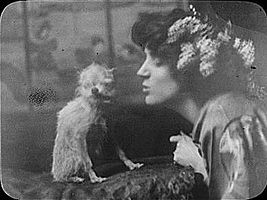
Dog Days of Gotham: Free Virtual Tour
Speaking of dogs: Just a quick reminder that on Saturday, May 7, at 11 a.m., I will be leading a virtual presentation for the Municipal Art Society of New York called “The Dog Days of Gotham.”
During the 40-minute Zoom presentation, I will talk about four of my favorite high-society dog owners of the early 20th century–a time when lap dogs were as much a status symbol for wealthy socialites as were their diamonds and furs.
Registration for this free event is required in advance. To register, Click Here.
A Brief History of New York’s Exchange for Women’s Work
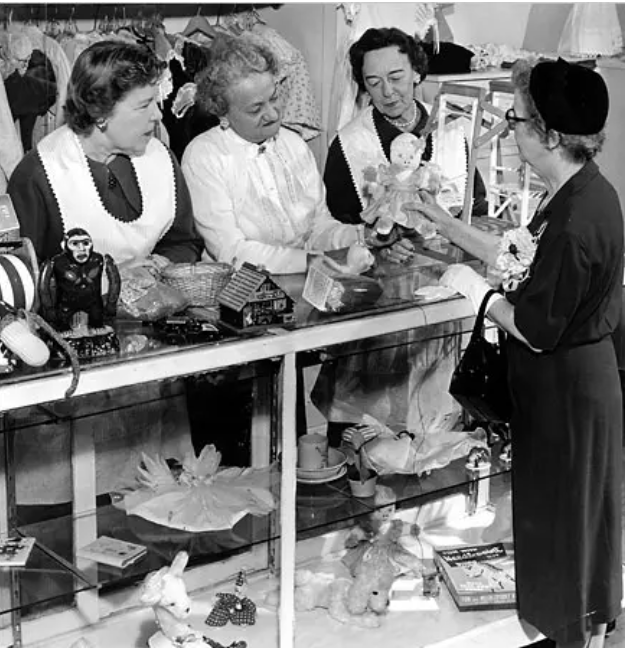
The Woman’s Exchange Movement in the United States began in 1832, when the Philadelphia Ladies’ Depository was first established. New York’s Exchange for Women’s Work opened its doors in May 1878.
Exchanges were non-profit establishments usually founded by wealthy philanthropic women to help women in need earn a living without having to leave their homes. The women sold their embroidery work, quilt work, and other handmade items–or offered sewing and knitting services–to wealthy woman who patronized the exchanges.
In New York City, textile designer Candace Wheeler and philanthropist Mary Atwater Choate wanted to help middle-class widows who had lost their husbands during the Civil War support their families. Back then, social standards dictated that middle- and upper-class women who worked outside the home would lose their social status. This cruel social norm left women with no choice: either lose their position in society or let their families slip into poverty.

Mrs. Wheeler and Mrs. Choate each gathered some wealthy women friends, who invited a few more friends, and after “much doubtful discussion,” decided to give their idea a shot. Their idea was to “furnish a depot where gentlewomen in reduced circumstances may find customers for useful and ornamental articles of their own handwork.” Women of means could also place orders “for any variety of work” with “persons competent and anxious to fill them.”
The first home of the New York Exchange for Women’s Work was in the Choate parlor at 108 East 31st Street. On the first day, the exchange started with one table of articles, including “crocheted tea cozies, ‘God-Bless-Our-Home’ samplers, stiff, unprickable pincushions, and pictures painful to the eye of the beholder.” According to the Brooklyn Daily Eagle, the one article that saved the day was a beautiful white shawl.

By April 1893, the Exchange had grown out of the rooms it was renting at 329 Fifth Avenue. They were too small, and there was no room to add an educational department, so the managers wanted to raise $200,000 to buy a building of their own.
During a fund-raising event at Madison Square Garden II, Joseph Hodges Choate, United States Ambassador to the United Kingdom, provided a simple way to raise the money while stressing that there was not one man in the audience who could ever know how soon his wife or daughter could one day “be reduced to the circumstances of those beneficiaries for which this society has been organized”:
“The managers of this exchange now ask that the people of this city, who can afford it, shall provide them with a building where they can properly conduct their work. It’s an easy matter for this audience to raise $200,000. I see before me men who could raise it alone. I would say to the managers, however, pick out your millionaires, there are said to be 1,200 of them in this city.
Their money is corrupting them and their families all the time, and no one knows it better than they do. Each one of you pick out your millionaire, take him by the throat, and ask him for his money. Don’t approach him through his wife…Let them go down in Wall and Broad and New Streets and in all the streets where great piles of money walk around on two legs in human form and ask for what you want.”
Take them by the throat? Talk about putting your money where your mouth is!

Apparently, the plan worked. By the summer of 1894, the Exchange for Woman’s Work had moved into its new four-story home at 12 East 30th Street.
Items for sale that opening week included “pincushions and the daintiest of toilet articles, pretty China and embroidered old linen, exquisite large screens, and any number of things.” There was also a lunchroom which served luncheon every day except Saturday from noon to 3 for “little theatre parties, ladies out shopping, and occasionally a man or two.”
The Exchange continued to grow–it even offered a finishing school for young women, with a focus on history, literature, and reading. Over the years, the Exchange moved several times, from a four-story home at 334 Madison Avenue in 1901, which they purchased from the Carey family to a large, five-story building at 541 Madison Avenue with a large restaurant on the ground floor.
The restaurant offered such diverse items as bittersweet chocolate cake and home-baked crab cakes, codfish balls and fancy wedding cakes. It was a place to eat well and be seen at a moderate cost.
When it closed in 2003 due to the high rent and overhead costs, the Exchange was located at 149 East 60th Street. According to the New York Times, during its final days, there was a blue crocheted shawl and framed needlepoint art of a lighthouse, two white hand-knitted baby sweaters, and a handful of cream-colored antique bowls on display in the front window.
There was no dog walker or doggie in the window. (Perhaps if there were, someone would have asked, “How much?”)
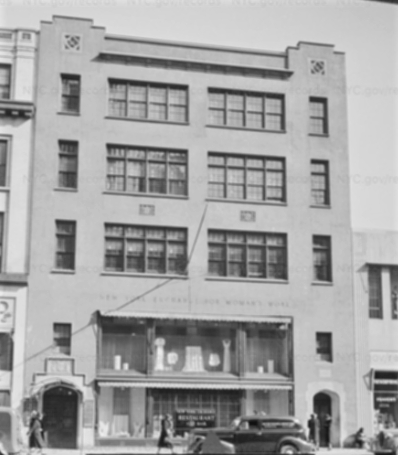




I often wonder about the origins of different things but I realize that I had never thought about the first professional dog walker in NYC! Thank you so much for sharing this fascinating and delightful story!